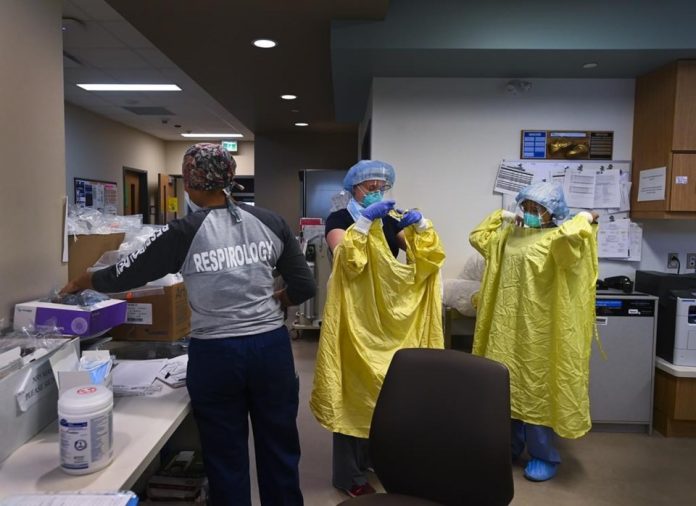Less than five hours before it was to take effect at midnight Thursday, the Ford government released its legal parameters around a new stay-at-home order enacted for at least the next 28 days meant to keep people home to stop the spread of COVID-19.
The order says people cannot leave home, except for about 33 essential reasons:
You must not leave home, except:
· To go to work or volunteer. The work role
must be considered “essential.” Per the terms of the order, employers get to decide if a job is essential or not.
· To go to school. (Elementary schools, secondary schools and post-secondary institutions are largely closed for in-person learning in southern Ontario).
· “Attending, obtaining or providing child care. (Child care facilities are closed, except those that provide care to children not old enough to be enrolled in school.)
· “Receiving or providing training or educational services.”
To buy things:
· Purchasing “food, beverage and personal care items.”
· Obtaining healthcare items and medication
· Buying goods or services that are “necessary for the safe operation, maintenance or sanitation of households, businesses, means of transportation or other places.”
· Buying or attending an appointment at any business allowed to be open, including for curbside pickup.
· Attending a financial institution.
· Receiving any government service including healthcare or mental health assistance.
Helping others:
· Delivering goods or providing care to anyone in a congregate care setting, or receiving goods or support.
· Accompanying someone else outside who requires assistance to travel.
· Transporting a child to their parent or guardian’s home.
· Transporting a member of one’s household “to any place the member of the household is permitted to go under this Order.”
To protect oneself:
· From domestic violence
· Assisting someone living in unsafe conditions
· Seeking help in an emergency situation
· Attending a court or other location for the administration of justice
To exercise:
· As defined as “walking or moving around outdoors” using “an assistive mobility device,” or an outdoor amenity permitted to be open during Stage 1 of Ontario’s reopening rules. There is no word on what an individual would have to show a peace officer to prove they are exercising. Playgrounds and play structures were closed during Ontario’s Stage 1. So far, most outdoor amenities are permitted to be open, save for ski hills. But the question of permitted outdoor amenities has sparked confusion.
Indigenous rights:
· All activities protected under Aboriginal treaty as defined by the Constitution Act of 1982.
Moving and travelling:
· Travelling is permitted to another location if the person intends to stay there less than 24 hours and is doing so for one of the other purposes set out in the order.
· Otherwise, travelling to another residence is only allowed if an individual intends to stay there for at least 14 days.
· Travelling between homes of parents, guardians or caregivers in order to safeguard someone under their care.
· “Making arrangements to buy or sell a residence or to begin or end a residential lease.”
· Moving
· Going to the airport, train or bus station, “for the purpose of travelling to a destination that is outside of the Province. (The latest orders suggest a voluntary self-isolation period of 14 days when returning to Ontario, even from another province.)
Gathering:
· If one lives alone, with the members of one additional household.
· For a wedding, funeral or religious service. (With no more than 10 people indoors or outdoors.)
Caring for animals:
· Buying food or veterinary services for an animal
· Walking an animal
· Preventing or avoiding an imminent risk to an animal’s health or safety, including preventing animal abuse.
Nothing in these orders apply to the homeless, a source of concern for rights groups and advocates who pointed out many homeless Ontarians were targeted and ticketed during the first wave of the COVID-19 pandemic.
































